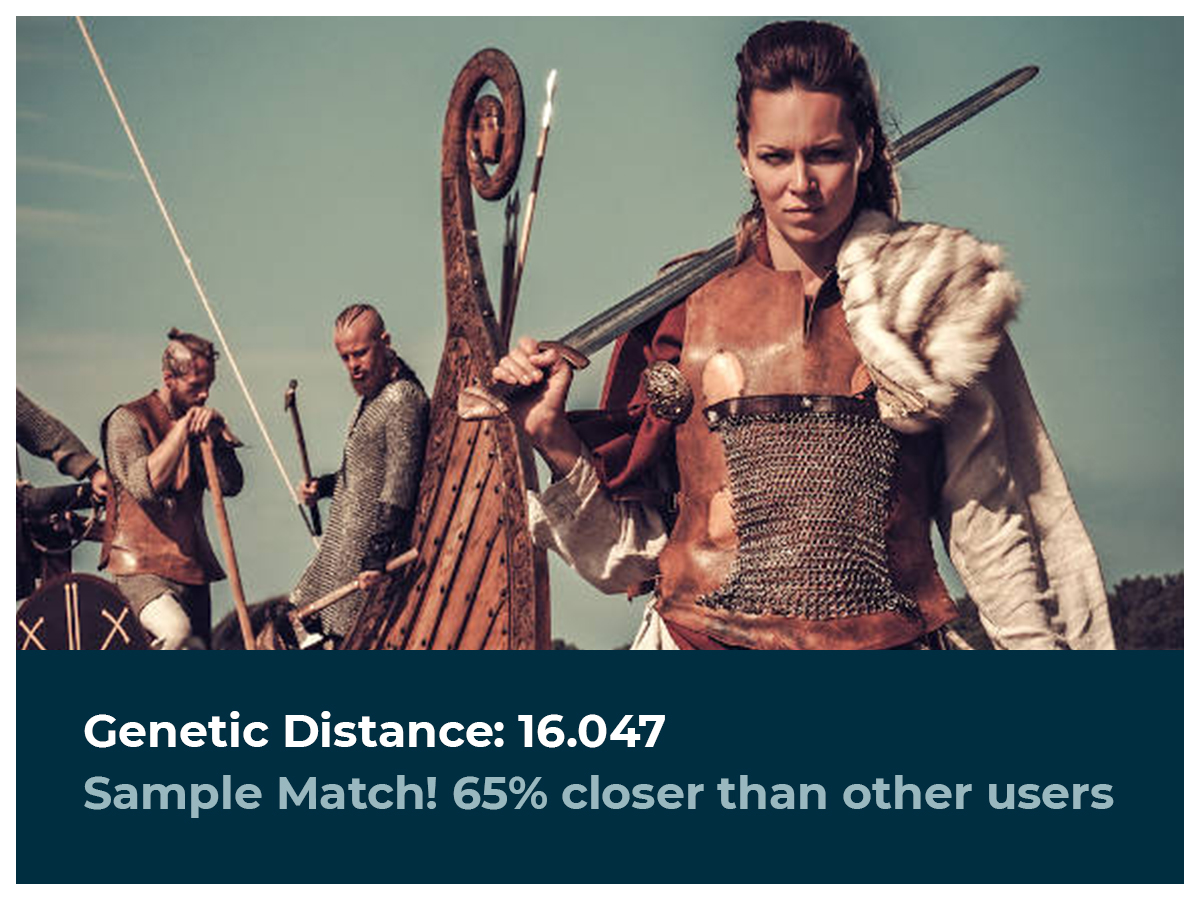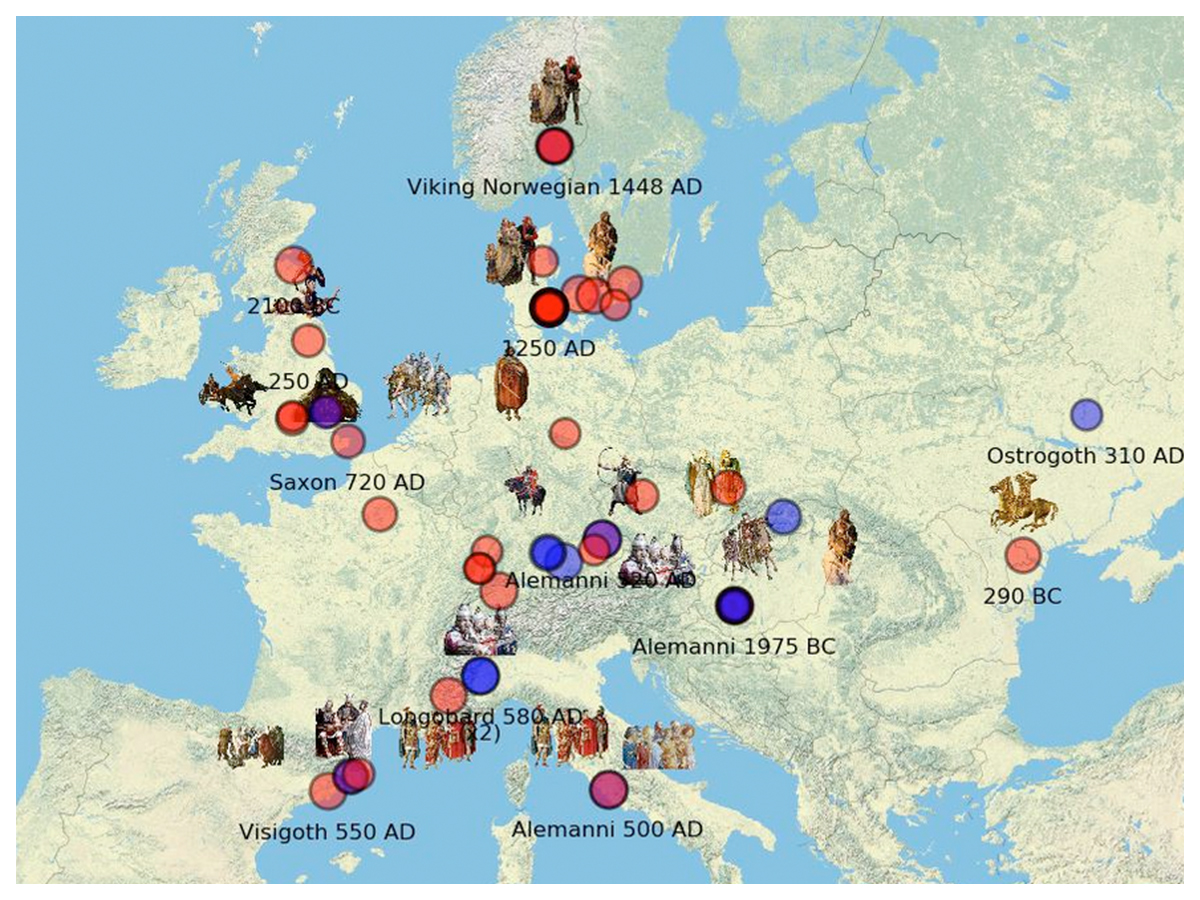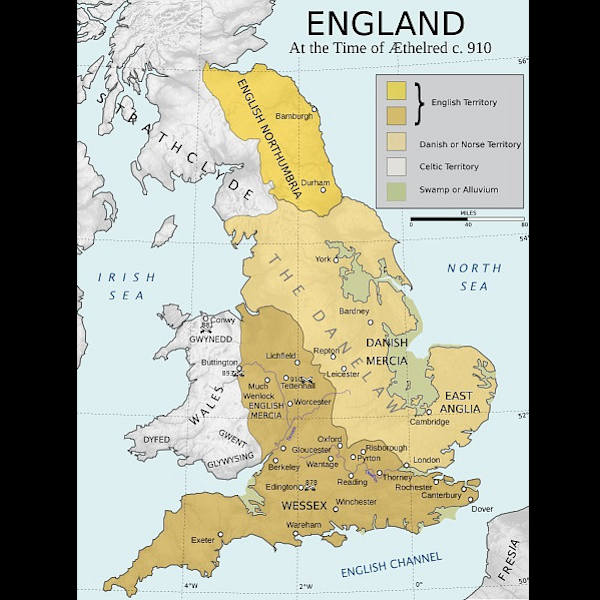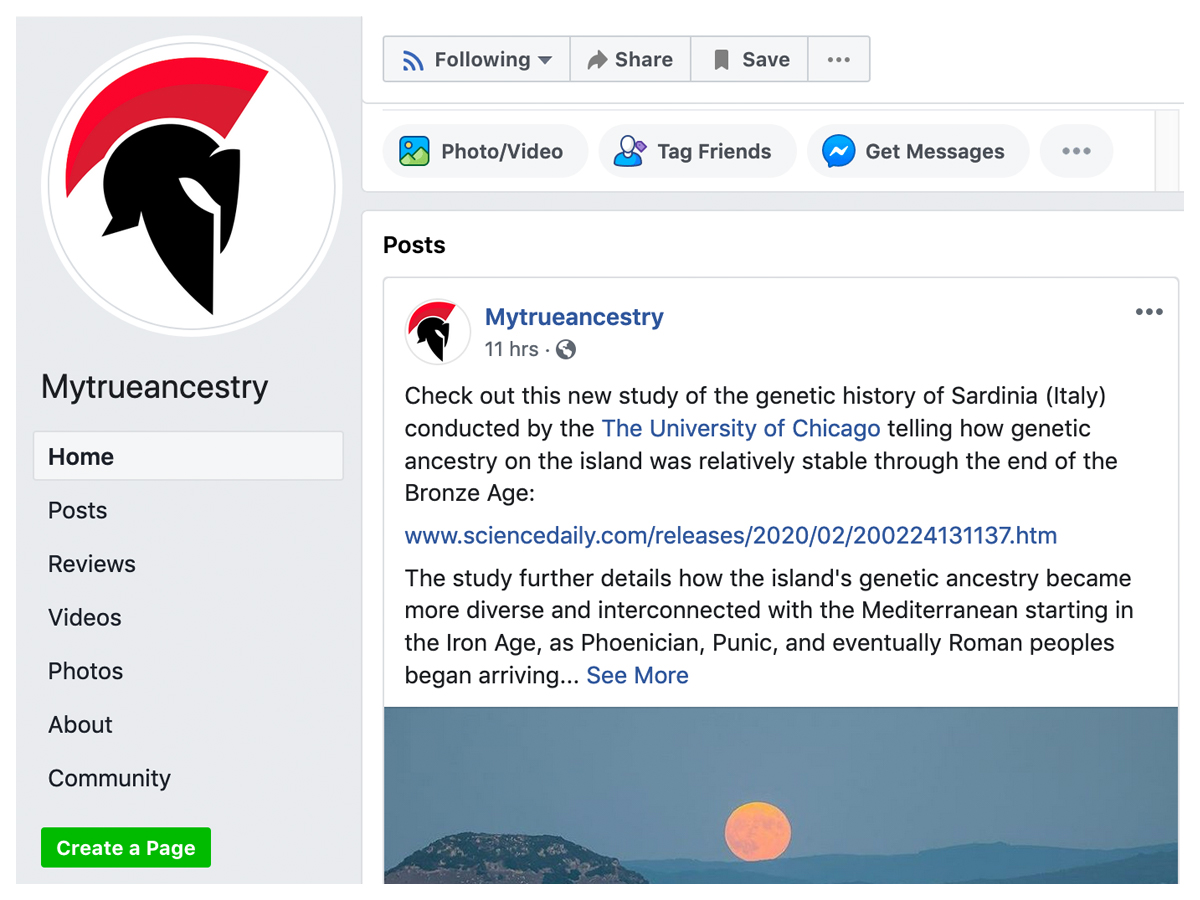Compare your DNA to 165 Ancient Civilizations
FIND THE HISTORY OF YOU
So, you've got your DNA results? To discover who you really are, you need to know where you come from. We can take your DNA results one step further through the use of advanced archaeogenetics
How It Works
Uncovering your ancient ancestry is simple with our three-step process.

Take a DNA Test
Get tested with one of the major DNA testing companies (e.g. AncestryDNA, MyHeritage, FamilyTreeDNA, DanteLabs etc.).

Download Your Raw Data
Download your raw DNA data file from your testing provider's website. We support all major formats.

Upload & Explore
Upload your DNA file to our secure platform and receive your detailed ancestry analysis within minutes.
DIG DEEP
Into Your Ancient History
Is this your Ancestor?
Your DNA will be compared to over 11,000 Ancient Individuals.

VIKING HIGH-RANKING BIRKA SHIELD-MAIDEN
brk581 (950 AD) mtDNA Haplogroup: T2b
The Birka Viking warrior was a woman buried in the 10th century, in Birka, Sweden, and discovered in the 1870s. The grave was assumed to be a "battle-hardened man" for 128 years, until DNA analysis proved she was actually a high-ranking professional warrior.
See Your Ancient Past in Action
Our selection of interactive maps will show you where, and when your genetic ancestors lived.

You can also journey through time with our ancestral timelines. With this tool, you can search your matches by ancestry, or direct DNA segments.
Why Choose MyTrueAncestry
Discover what sets our ancient DNA analysis apart from traditional ancestry services.

100% Anonymous Insights
All retained data is fully anonymized, ensuring your privacy is completely protected.

Powered by Real Ancient DNA
The only service powered by real ancient DNA samples from all over the world and advanced archaeogenetics technologies.

Try For Free
Our basic analysis is 100% free for you to try with no payment method required.
BROWSE OUR DNA SPOTLIGHTS
French King Louis XVI Mystery

French revolutionists condemned King Louis XVI to death on 21. January 1793
by means of the guillotine at the Place de la Revolution in Paris (roughly where
the Obelisk decorating the Place de la Concorde stands today). After a short but
defiant speech he lost his head as the crowd rushed to the scaffold to dip
hankerchiefs into his blood as momentos. An ornate gourd decorated with French
Revolution themes was recently uncovered which had contained a blood soaked
hankerchief dating to this time. The gourd was allegedly a gift to Napoleon
Bonaparte who became First Consul of France in 1799 and Emperor in 1804. An
anonymous Italian family was in its posession since possibly the late 1800s and
came forward with the relic. It bears an inscription that Maximilien Bourdaloue
on 21. January dipped his hankerchief in the blood of the king. Dried blood was
scraped out and this is the same DNA we present in this DNA spotlight! The
sample contains unsually high and rare markers for the Y-DNA haplogroup G2a.
Louis XVI's direct male line ancestor Henri IV was famous for enacting the
Edict of Nantes which guaranteed religious liberties to Protestants ending 30
years of fighting between French Protestants and Catholics - he was assassinated
in 1610 by a French Catholic zealot. The remains had been presumed lost in the
chaos of the French Revolution after a mob of revolutionaries desecrated the
graves of French kings in the royal chapel of Saint-Denis in Paris in 1793.
However, the head was passed down over the centuries by secretive private
collectors and positively identifed in 2010 with a radiocarbon date between 1450
and 1650. The features were consistent with the king's face including a dark
mushroom-like lesion near the right nostrial, a healed facial stab wound and a
pierced right earlobe. The hair color and moustache and beard on the mummified
head fit the appearance of the king at the time of his death as well as matched
his portraits. Furthermore cutting wounds were visible corresponding to the
separation of the head from the body in 1793 and digital facial reconstruction
of the skull matched the plaster mould of his face made just after his death in
1610. The DNA was then tested and compared to the blood from the gourd.
Read more here
Danish Viking Clan

Beginning in the 8th century, the Danes began a long era of well-organized
raids across the coasts and rivers of Europe. Large areas outside Scandinavia
were settled by the Danes including what became know as the Danelaw in England,
the Netherlands, northern France and Ireland. Two Viking warriors from the same
clan separated for more than 1000 years and have finally been reunited at the
Danish National Museum in Copenhagen.
Danelaw was established as an area ruled by Vikings and extended across
much of England. A group of fairly young Viking warriors was found here buried
in a mass grave near the church where they had been killed by orders from King
Aethelred II, King of the English. The warrior hilighted here was in his 20s and
died from injuries to his head. He had sustained 8 to 10 hits to the head and
several stab wounds to the spine.
Read more here
St. Brice's Day Massacre

Aethelred II, known later as the Unready, was King of the English from
978 to 1013 and again from 1014 until his death. He came to the throne at the
age of 12 after his half brother was murdered. At the start of his reign, Danish
raids on English territory began in earnest. Aethelred defended his country by a
diplomatic alliance with the duke of Normandy. The Battle of Maldon on 11.
August 991 AD involved 2,000-4,000 fighting Viking men led by Olaf Tryggvason
against the Anglo-Saxon leader Byrhtnoth who was the Ealdorman of Essex. This
ended in defeat for the Anglo-Saxons and King Aethelred was forced to pay
tribute, also known as Danegeld, to the Danish king. This payment of 10,000
Roman pounds of silver was the first example of Danegeld in England - a pattern
which would follow. The Danish army continued ravaging the English coast until a
Danegeld of 22,000 pounds of gold and silver was paid - at which point Olaf
Tryggvason promised to never return. Viking attacks only grew worse - Danish
raids would follow leading to an even larger Danegeld payment of 24,000 pounds
for peace in the Spring of 1002 AD.
The same year, Aethelred married Lady Emma, the sister of Duke Richard II
of Normandy in hopes of a stronger diplomatic alliance. On St. Brice's Day, 13.
November 1002, the confident yet paranoid King ordered the killing of all Danes
living on border towns such as Oxford. Aethelred described this massacre in his
own words: ... a decree was sent out by me with the counsel of my leading men
and magnates, to the effect that all the Danes who had sprung up in this island,
sprouting like cockle amongst the wheat, were to be destroyed by a more just
extermination, and thus this decree was to be put into effect even as far as
death, those Danes who dwelt in the afore-mentioned town, striving to escape
death, entered this sanctuary of Christ, having broken by force the doors and
bolts, and resolved to make refuge and defence for themselves therein against
the people of the town and the subrubs; but when all the people in pursuit
strove, forced by necessitym to drive them out, and could not, they set fire to
the planks and burnt, as it seems, this church with its ornaments and its
books.
Read more here

Join Our Community
New content is frequently released, and one of the best ways to stay connected is through our Instagram or Facebook pages. Connect with our global community today, and dig deeper into your ancient past.

In the press...
Also Featured on:

Contact Us:
EMAIL
INFO@MYTRUEANCESTRY.COM
MAILING ADDRESS
MyTrueAncestry AG
Seestrasse 112
8806 Bäch
Switzerland


